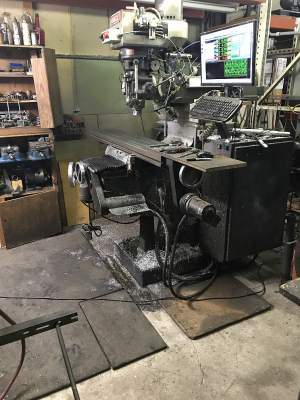Well, not on his first post anyways. 
I am having a hard time trying to find a place to start, so I am thinking my final vision and work backwards from there. I am looking to pick up hobby machining because... reasons. I have a lot of them. Gunsmithing. Bladesmithing. Stuffsmithing. You get the idea.
I am wanting (needing?) recommendations for a knee mill that I can put a CNC conversion on. My brother has approached me with an interesting business opportunity that I think would go very well with a CNC set up. However, I want to keep the flexibility of a standard walk-up mill. So.... that's why I am looking at this route as opposed to a dedicated CNC VMC. I could look at a good used piece of equipment, but I know a good machine poorly maintained is just as bad a a bad quality machine that is well maintained.
I would also like recommendations for any CNC conversion kits. I have done some research and they are literally all over the place. I am leaning toward a turnkey(ish) solution to complete the frankenmill. I know part of the 'fun' is getting it all together and working, but at my stage in life and with my physical limitations that is more challenge than I am willing to undertake.
Any way, that's all for the moment.
That Harlech Guy
I am having a hard time trying to find a place to start, so I am thinking my final vision and work backwards from there. I am looking to pick up hobby machining because... reasons. I have a lot of them. Gunsmithing. Bladesmithing. Stuffsmithing. You get the idea.
I am wanting (needing?) recommendations for a knee mill that I can put a CNC conversion on. My brother has approached me with an interesting business opportunity that I think would go very well with a CNC set up. However, I want to keep the flexibility of a standard walk-up mill. So.... that's why I am looking at this route as opposed to a dedicated CNC VMC. I could look at a good used piece of equipment, but I know a good machine poorly maintained is just as bad a a bad quality machine that is well maintained.
I would also like recommendations for any CNC conversion kits. I have done some research and they are literally all over the place. I am leaning toward a turnkey(ish) solution to complete the frankenmill. I know part of the 'fun' is getting it all together and working, but at my stage in life and with my physical limitations that is more challenge than I am willing to undertake.
Any way, that's all for the moment.
That Harlech Guy



